In the evolving landscape of brand positioning and corporate messaging, communication agencies have emerged as indispensable partners for businesses of all sizes. These specialized firms serve as the strategic bridge between organizations and their audiences, crafting narratives that resonate across increasingly fragmented media channels. With global players like Ogilvy and Publicis setting industry standards, communication agencies have transformed from simple advertising shops into comprehensive business consultancies. Their scope encompasses everything from crisis management to digital transformation, with the most successful agencies seamlessly blending creative intuition with data-driven insights. As businesses navigate complex stakeholder expectations and shifting consumer behaviors, communication agencies provide the expertise needed to cut through the noise with authentic, impactful messaging. Their value proposition extends beyond mere visibility—they help organizations build lasting relationships with audiences through strategic storytelling and carefully orchestrated touchpoints that drive meaningful engagement.
The Strategic Foundation of Communication Agencies
At their core, communication agencies function as strategic partners that help businesses articulate their value proposition and connect with target audiences. Unlike traditional advertising firms that primarily focused on creative execution, modern communication giants like Wunderman Thompson and Edelman approach client challenges through a more comprehensive lens. They begin by conducting thorough research to understand market dynamics, competitive landscapes, and audience behaviors before developing communication strategies that align with business objectives.
The strategic planning process typically involves multiple phases of analysis and ideation. Initially, agencies work closely with clients to define communication goals that support broader business targets. This collaborative approach ensures that campaigns aren’t created in isolation but rather serve as extensions of the organization’s mission and vision. Strategic communication planning often involves stakeholders from various departments to ensure alignment and buy-in across the organization.
Modern communication strategies must account for increasingly complex customer journeys. Agencies like McCann excel at mapping these journeys and identifying critical touchpoints where messaging can make the greatest impact. They analyze how prospects move from awareness to consideration to decision, crafting content strategies that nurture relationships at each stage. This holistic view allows for more efficient resource allocation and greater messaging coherence across channels.
Data analytics has revolutionized the strategic foundation of communication work. Leading agencies invest heavily in research tools and methodologies that provide actionable insights. Rather than relying solely on creative intuition, firms like FleishmanHillard integrate quantitative and qualitative research to identify communication opportunities and potential pitfalls. This evidence-based approach minimizes risk and increases the likelihood of campaign success.
- Market research and competitive analysis to identify positioning opportunities
- Audience segmentation and persona development for targeted messaging
- Message architecture development that aligns with brand values
- Channel strategy optimization based on audience consumption habits
- Performance measurement frameworks to evaluate communication effectiveness
The strategic planning stage also involves establishing key performance indicators (KPIs) that will measure campaign effectiveness. These metrics move beyond vanity measurements to focus on business impact. While reach and engagement remain important, sophisticated agencies connect communication activities to conversion metrics, lead generation, and ultimately revenue contribution. This accountability has elevated the perception of communication work from a cost center to a business driver.
| Strategic Component | Agency Responsibility | Business Impact |
|---|---|---|
| Brand Positioning | Defining unique market space and competitive differentiation | Creates clear identity that drives premium positioning |
| Message Architecture | Developing hierarchical framework of key messages | Ensures consistency across all communication channels |
| Audience Segmentation | Identifying and prioritizing key stakeholder groups | Enables targeted messaging that resonates with specific needs |
| Channel Strategy | Selecting optimal platforms for message distribution | Maximizes reach while optimizing media investment |
| Measurement Framework | Establishing KPIs and evaluation methodologies | Demonstrates ROI and enables continuous improvement |
While Publicis and other global agencies serve multinational clients with complex needs, the strategic approach scales appropriately for organizations of all sizes. The fundamental questions remain consistent: Who are we trying to reach? What do they care about? How can our message stand out? What actions do we want to drive? Agencies that excel at answering these questions create the foundation for successful campaigns regardless of budget or scope.

The Evolution from Tactical Execution to Strategic Partnership
The transformation of communication agencies from tactical executors to strategic partners represents one of the most significant shifts in the industry. Historically, many firms operated primarily as service providers, taking client briefs and producing creative assets with limited input on business strategy. Today, agencies like Burson Cohn & Wolfe position themselves as business consultants who happen to specialize in communication, bringing strategic value far beyond creative execution.
This evolution has been driven by several factors, including client demand for greater accountability and the increasing complexity of the media landscape. As marketing budgets face greater scrutiny, organizations expect agencies to demonstrate how communication activities drive business results. This has elevated agency relationships from vendors to trusted advisors who participate in high-level planning discussions and help shape business strategy.
The strategic partnership model has also been influenced by changing competitive dynamics. Management consultancies like Accenture and Deloitte have acquired creative agencies to offer integrated services that span strategy, experience design, and implementation. This convergence has prompted traditional communication agencies to strengthen their strategic capabilities while maintaining their creative edge.
Client-agency relationships have evolved accordingly, with many organizations reducing their roster of partners to work more deeply with fewer strategic agencies. Rather than managing dozens of specialized vendors, companies increasingly seek integrated partners who can provide end-to-end solutions. This consolidation benefits both parties: clients receive more cohesive service, while agencies gain deeper understanding of the business that enables more effective communication planning.
The partnership approach requires agencies to develop expertise beyond traditional communication disciplines. Teams must understand business models, industry dynamics, and competitive pressures to provide valuable strategic counsel. This has implications for talent development, with agencies like Havas recruiting professionals with diverse backgrounds including business strategy, data science, and management consulting.
- Integration into client planning cycles and business reviews
- Co-development of communication strategies aligned to business goals
- Shared accountability for business outcomes
- Long-term relationship building versus project-based engagements
- Cross-functional collaboration with client teams beyond marketing
The most successful agency-client partnerships feature transparent communication, aligned incentives, and mutual respect. Agencies gain access to business information previously kept confidential, while clients benefit from external perspective and specialized expertise. This collaborative model represents a significant departure from transactional relationships where agencies simply executed predetermined tactics.
Creative Excellence in Communication Strategy
While strategic planning provides the foundation, creative execution remains the hallmark of exceptional communication agencies. Firms like Grey and DDB have built their reputations on the ability to translate strategic insights into compelling creative concepts that capture attention and drive action. This creative excellence isn’t merely about aesthetic appeal—it’s about developing powerful ideas that solve business problems in unexpected ways.
The creative development process has evolved significantly in response to changing media consumption habits and audience expectations. Traditional approaches focused heavily on mass media campaigns with long development cycles. Today’s creative ideation must be more agile, producing content that works across multiple platforms while maintaining consistency of message. This requires creative teams to think in terms of flexible systems rather than fixed executions.
Leading agencies maintain their creative edge through structured approaches to ideation that balance inspiration with discipline. They create environments where diverse perspectives can flourish while ensuring creative concepts remain anchored in strategy. This balance is particularly evident at agencies like Ogilvy, where creative teams collaborate closely with strategists throughout the development process to ensure ideas deliver against business objectives.
Creative development increasingly incorporates audience input through various testing methodologies. Rather than relying solely on creative directors’ judgment, agencies use techniques like concept testing, focus groups, and digital prototyping to validate ideas before full production. This evidence-based approach reduces risk while maintaining the space for breakthrough thinking that can transform brands.
| Creative Approach | Key Characteristics | Best Application |
|---|---|---|
| Disruptive Creativity | Challenges category conventions, creates new paradigms | Challenger brands seeking to differentiate |
| Purpose-Driven Creativity | Centers on social impact and shared values | Brands with authentic commitment to causes |
| Data-Inspired Creativity | Uses behavioral insights to drive creative direction | Performance-focused campaigns with clear metrics |
| Cultural Creativity | Taps into zeitgeist and current conversations | Brands seeking relevance with specific communities |
| Experiential Creativity | Creates immersive brand interactions beyond advertising | Brands focusing on customer experience as differentiator |
Technology has transformed creative execution capabilities, enabling personalization at scale. Where agencies once created a handful of assets for mass distribution, they now develop modular content systems that can be dynamically assembled based on audience characteristics. This adaptive approach allows for more relevant messaging while maintaining brand coherence across touchpoints.
- Concept development rooted in audience insights and brand strategy
- Creative testing methodologies to validate effectiveness
- Production approaches that maximize efficiency across channels
- Creative technology integration for enhanced engagement
- Content systems designed for personalization and adaptation
The most effective creative work balances emotional appeal with rational persuasion. While data has become increasingly important in communication planning, agencies like Wunderman Thompson recognize that human decision-making remains deeply influenced by emotional factors. Their creative approaches aim to forge emotional connections while delivering clear information that supports decision-making.

The Intersection of Data and Creativity
The relationship between data and creativity represents one of the most significant evolutions in modern communication agencies. What was once viewed as a tension between opposing forces has transformed into a symbiotic partnership that enhances both strategic planning and creative execution. Agencies like Publicis have pioneered approaches that use data to inform creative development without constraining imaginative thinking.
Data integration begins in the planning phase, where audience insights inform creative briefs. By analyzing behavioral patterns, sentiment, and engagement metrics, agencies identify specific pain points and opportunities that creative work can address. This foundation ensures that even the most innovative concepts remain relevant to audience needs and motivations.
The creative process itself has evolved to incorporate data at multiple stages. Creative optimization tools allow for rapid testing of different approaches, measuring how variations in messaging, visuals, and formats impact audience response. This iterative approach enables continuous refinement based on real-world performance rather than subjective opinion alone.
Personalization represents another frontier where data and creativity intersect. Dynamic creative optimization (DCO) enables agencies to develop content systems where elements automatically adapt based on audience characteristics, context, and behavior. This approach maintains creative integrity while delivering more relevant experiences at scale.
While embracing data, leading agencies maintain a healthy skepticism about its limitations. They recognize that breakthrough ideas often emerge from intuitive leaps that data alone cannot predict. The most sophisticated agencies create processes that use data to inform rather than dictate creative direction, preserving space for unexpected connections and emotional resonance.
- Audience analysis to identify motivations and pain points
- A/B and multivariate testing of creative approaches
- Performance measurement to guide creative optimization
- Personalization engines that adapt content to individual preferences
- Predictive modeling to anticipate content performance
The integration of data science teams within creative departments highlights this evolution. Rather than operating as separate functions, these disciplines increasingly collaborate throughout the campaign lifecycle. This convergence enables more agile adaptation to performance insights while maintaining creative excellence and brand consistency.
As AI tools become more sophisticated, agencies are exploring how generative technologies can enhance rather than replace human creativity. Platforms that can rapidly produce variations or adaptations allow creative teams to focus on high-value conceptual work while automating production tasks. This evolution promises greater efficiency without sacrificing the human insight that drives truly transformative ideas. Check out these tips to boost social media engagement for practical applications of this approach.
Integrated Channel Management in Communication Strategies
The proliferation of communication channels has fundamentally transformed how agencies approach campaign planning and execution. Where agencies once specialized in specific disciplines like advertising, public relations, or direct marketing, today’s communication landscape demands integrated management across paid, owned, earned, and shared media. Leading firms like FleishmanHillard have restructured their organizations to deliver seamless experiences regardless of where audiences encounter brand messages.
This integrated approach begins with channel-agnostic planning that focuses on audience journeys rather than media silos. Strategy teams map how different stakeholders discover, evaluate, and engage with brands across touchpoints. This holistic view enables more effective resource allocation and ensures consistent messaging regardless of where interactions occur.
Channel integration requires sophisticated orchestration capabilities. Agencies like McCann have developed processes and technologies that coordinate messaging across platforms while allowing for channel-specific optimization. This balance ensures campaigns maintain coherent narratives while leveraging the unique strengths of each medium.
The paid media landscape continues to evolve rapidly, with increasing fragmentation and complexity. Communication agencies must navigate programmatic advertising, influencer partnerships, sponsored content, and traditional media buying. This requires specialized expertise in audience targeting, bid management, and performance optimization to ensure efficient investment across channels.
| Channel Category | Components | Strategic Value |
|---|---|---|
| Paid Media | Digital advertising, traditional advertising, sponsored content | Controlled messaging with precise targeting and scalability |
| Owned Media | Websites, blogs, email, mobile apps, physical locations | Direct relationship building and content control |
| Earned Media | Press coverage, reviews, word-of-mouth, organic social mentions | Credibility through third-party validation |
| Shared Media | Social media platforms, community forums, collaborative content | Audience participation and relationship amplification |
| Converged Media | Initiatives that blend multiple channel categories | Comprehensive audience engagement across the journey |
Owned media has gained strategic importance as organizations seek to build direct audience relationships. Agencies help clients develop content ecosystems that attract and engage target audiences while gathering valuable first-party data. This approach includes websites, blogs, email programs, mobile applications, and even physical spaces designed to deliver consistent brand experiences.
Earned media remains powerful due to its credibility advantages, though it has evolved significantly in the digital age. Beyond traditional media relations, agencies help clients earn attention through content partnerships, thought leadership, executive positioning, and participation in industry conversations. These approaches generate third-party validation that enhances brand perception and complements paid initiatives.
- Cross-channel campaign planning and synchronization
- Content adaptation for channel-specific requirements
- Audience targeting consistency across platforms
- Performance measurement integration across touchpoints
- Budget optimization across the channel mix
Shared media—particularly social platforms—requires specialized management approaches that balance planned content with real-time engagement. Agencies like Edelman have developed sophisticated social media command centers that monitor conversations, identify opportunities, and enable rapid response. This capability has become essential as audiences increasingly expect brands to participate authentically in online communities.
Digital Transformation and Communication Excellence
The digital transformation of communication agencies extends far beyond simply adopting new technologies. It represents a fundamental reimagining of how these firms operate, deliver value to clients, and measure success. Agencies like Havas have undergone comprehensive transformation to integrate digital capabilities throughout their organizations rather than maintaining them as separate services.
This transformation begins with talent development and organizational structure. Leading agencies have recruited digital specialists while simultaneously building digital fluency across all teams. This hybrid approach ensures specialized expertise where needed while enabling collaboration across disciplines. The most successful models maintain centers of excellence in emerging technologies while embedding digital thinking in all client teams.
Technology infrastructure represents another critical component of agency transformation. Marketing technology integration has become a core service offering as clients seek help navigating complex martech and adtech ecosystems. Agencies help clients select, implement, and optimize platforms that enable data-driven communication and measurement.
The digital transformation has profoundly impacted workflow and production processes. Traditional linear approaches with lengthy timelines have given way to agile methodologies adapted from software development. These iterative processes enable more rapid development, testing, and optimization of communication initiatives based on real-time performance data.
Data management capabilities have become essential to agency operations. Firms like Grey have invested heavily in data infrastructure, analytics tools, and talent to help clients derive actionable insights from increasingly complex information sources. This includes expertise in first-party data strategy, privacy compliance, and measurement frameworks that connect communication activities to business outcomes.
- Digital capability assessment and transformation roadmaps
- Technology selection and implementation guidance
- Data strategy development and activation support
- Agile process implementation for marketing operations
- Digital upskilling programs for client teams
The transformation extends to agency business models and compensation structures. Traditional retainer and commission arrangements have evolved toward performance-based models that align agency incentives with client success metrics. This accountability has strengthened agency-client partnerships while driving greater focus on measurable business impact.
Perhaps most importantly, digital transformation has enabled agencies to deliver more personalized experiences at scale. By combining creative excellence with data-driven targeting and delivery, communication firms help clients engage audiences with greater relevance and timeliness. This capability has become increasingly valuable as consumers expect interactions tailored to their specific needs and preferences. Visit this resource on social media engagement to see practical applications of these principles.
Measuring Communication Impact and ROI
The ability to demonstrate return on investment has become a defining capability for leading communication agencies. As marketing budgets face increased scrutiny, firms like DDB have developed sophisticated methodologies to connect communication activities with business outcomes. This evolution has transformed how agencies articulate their value proposition and collaborate with client organizations.
Measurement approaches begin with establishing clear objectives aligned to business goals. Rather than focusing solely on communication outputs (impressions, reach, frequency), agencies work with clients to identify outcomes that matter to the organization. These might include brand equity measures, lead generation metrics, conversion rates, customer retention figures, or direct revenue attribution.
Communication measurement frameworks have evolved to capture impact across the customer journey. Agencies map touchpoints to specific metrics that indicate progress toward business objectives. This comprehensive view enables more accurate assessment of how different activities contribute to overall success while identifying opportunities for optimization.
Technology plays a critical role in modern measurement approaches. Agencies leverage marketing attribution platforms, customer data platforms, and business intelligence tools to connect disparate data sources and reveal meaningful patterns. These technologies enable more granular analysis of how communication influences behavior while providing actionable insights for ongoing refinement.
| Measurement Level | Key Metrics | Business Application |
|---|---|---|
| Exposure Metrics | Impressions, reach, frequency, viewability | Understanding audience access to communication |
| Engagement Metrics | Click rates, dwell time, social interactions, content consumption | Gauging interest and initial response |
| Perception Metrics | Brand awareness, attribute association, sentiment analysis | Measuring changing perceptions and attitudes |
| Behavior Metrics | Website actions, store visits, information requests, purchases | Tracking tangible audience responses |
| Business Metrics | Revenue, market share, customer lifetime value, efficiency ratios | Connecting communication to financial outcomes |
Advanced agencies incorporate experimental design principles into measurement programs. Techniques like matched market testing, holdout groups, and incrementality analysis provide more rigorous assessment of communication impact. These approaches help isolate the effects of specific initiatives from other variables that influence business performance.
The most sophisticated measurement programs balance short-term performance indicators with long-term brand building metrics. Agencies like Ogilvy recognize that immediate response measures provide valuable feedback for optimization while brand equity metrics signal the cumulative impact of communication over time. This balanced view prevents overemphasis on tactical results at the expense of strategic brand development.
- Communication objectives aligned with business goals
- Multi-level measurement frameworks spanning outputs to outcomes
- Attribution modeling to connect touchpoints to conversions
- Experimental design to isolate communication effects
- Predictive analytics to forecast future performance
Reporting has evolved from static presentations to dynamic dashboards that enable ongoing monitoring and optimization. These visualization tools bring data to life, making insights accessible to stakeholders across the organization. More importantly, they facilitate data-driven decision making by highlighting opportunities for improvement in near real-time.
Future-Proofing Communication Strategies
As technology and consumer behavior continue evolving at unprecedented rates, communication agencies must help clients develop strategies that remain effective amid constant change. Firms like Wunderman Thompson position themselves as future-focused partners who anticipate emerging trends and prepare clients for evolving communication landscapes.
This forward-looking approach begins with systematic trend monitoring and analysis. Leading agencies maintain dedicated teams that track technological developments, shifting consumer preferences, regulatory changes, and competitive innovations. These insights inform strategic recommendations that help clients stay ahead of market evolution rather than simply reacting to it.
Communication innovation has become a structured discipline within top agencies. Rather than treating innovation as random inspiration, firms like Burson Cohn & Wolfe establish formal processes for identifying, evaluating, and implementing new approaches. These programs include innovation labs, pilot initiatives, and strategic partnerships with emerging technology providers.
Adaptive planning methodologies enable more flexible approaches to campaign development. Instead of creating rigid multi-year plans, agencies design modular strategies that can evolve based on performance data and changing conditions. This agile approach maintains strategic direction while allowing tactical adjustments as opportunities or challenges emerge.
Future-proofing requires particular attention to emerging platforms and formats. Agencies help clients evaluate where to experiment and when to scale investment in new channels. This guidance includes assessment of audience adoption, platform viability, and alignment with brand positioning to ensure resources focus on opportunities with genuine strategic potential.
- Trend monitoring and scenario planning exercises
- Innovation programs to test emerging approaches
- Adaptive strategy frameworks that evolve with conditions
- Emerging platform evaluation and experimentation
- Capability development roadmaps for future requirements
Privacy evolution represents a critical area where agencies provide future-focused guidance. As regulations tighten and consumer expectations shift, communication strategies must adapt to new constraints on data collection and usage. Agencies help clients develop first-party data strategies, privacy-centric measurement approaches, and contextual targeting alternatives that will remain viable in a post-cookie world.
Perhaps most importantly, future-proofing involves building organizational capabilities that enable ongoing adaptation. Beyond specific tactical recommendations, agencies like Publicis help clients develop internal structures, processes, and skills that support continuous evolution. This capability building ensures organizations can respond effectively to whatever changes emerge in the communication landscape. For practical applications, explore these engagement strategies that work across evolving platforms.
Frequently Asked Questions
What services do communication agencies typically provide?
Communication agencies offer a comprehensive range of services including strategic planning, creative development, media planning and buying, public relations, social media management, content creation, digital marketing, measurement and analytics, and crisis communication. Top firms like Edelman and Ogilvy provide integrated solutions that span the entire communication spectrum, while smaller boutique agencies may specialize in specific disciplines or industries. The scope typically depends on client needs and agency positioning, with many offering customized service packages rather than one-size-fits-all solutions.
How do I choose the right communication agency for my business?
Selecting the right agency involves evaluating several factors: strategic capability (their ability to understand your business challenges), industry expertise (experience in your sector), creative quality (portfolio strength), cultural fit (alignment with your organization’s values), technological proficiency (digital capabilities), and measurement approach (how they demonstrate ROI). The selection process typically involves reviewing case studies, meeting potential team members, and often a trial project to assess working dynamics. Consider whether you need a global network like Publicis or a specialized boutique depending on your specific communication needs.
What is the difference between a communication agency and an advertising agency?
While there’s significant overlap, advertising agencies traditionally focus on creating and placing paid media campaigns, whereas communication agencies take a broader approach encompassing earned, owned, and shared media alongside paid advertising. Communication agencies like FleishmanHillard typically offer more comprehensive stakeholder engagement strategies including public relations, corporate communication, and reputation management. The distinction has blurred in recent years as advertising agencies have expanded their services and communication agencies have strengthened their creative capabilities, with many now describing themselves as integrated agencies regardless of their historical focus.
How do communication agencies measure success?
Modern communication agencies employ multi-layered measurement frameworks that connect activities to business outcomes. These typically include exposure metrics (reach, impressions), engagement metrics (interactions, time spent), perception metrics (awareness, sentiment), behavioral metrics (conversions, leads), and business metrics (revenue, market share). Sophisticated agencies like McCann use attribution modeling and experimental design to isolate communication impact from other variables. The specific metrics depend on campaign objectives, with agencies increasingly using predictive analytics to forecast performance and enable proactive optimization.
How have communication agencies adapted to digital transformation?
Communication agencies have undergone comprehensive transformation to thrive in the digital age. This includes restructuring teams to integrate digital specialists throughout the organization, implementing agile working methodologies, investing in data infrastructure and analytics capabilities, developing expertise in marketing technology, and evolving service offerings to include digital experience design, content marketing, and performance media. Leading firms like Wunderman Thompson and Grey have also adapted their business models to include more performance-based compensation structures while building partnerships with technology providers to enhance their capabilities in emerging areas like AI and marketing automation.




